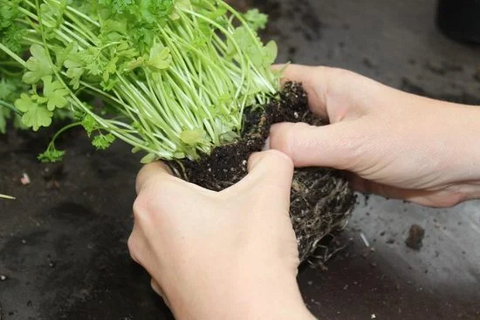In the ever-evolving landscape of gardening, where creativity knows no bounds, a new trend has taken root—literally. Imagine a garden that defies conventional boundaries, where plants not only stretch horizontally but also ascend to new heights. Welcome to the exploration of the synergy between Vertical Gardening and Raised Beds. In this blog, we'll uncover the magic of growing up for efficiency, exploring the practicalities, and benefits, and unveiling a collection of imaginative ideas to transform your garden into a multi-dimensional haven. The following content also has some reference value for raised garden beds.
Growing Up for Efficiency: The Vertical Advantage
- Space Maximization:
The magic begins with maximizing your gardening space. Raised beds, those elevated platforms of green potential, form the perfect canvas for vertical structures. The result? A garden that not only spreads horizontally but ascends, transforming every square inch into a thriving oasis of greenery.
- Accessibility Unleashed:
Elevating your garden isn't just about aesthetics; it's about accessibility. Vertical planters, trellises, and hanging baskets bring your plants closer, eliminating the need for constant bending and kneeling. This accessibility isn't just a convenience; it's a game-changer for those with physical limitations or anyone seeking a more ergonomic gardening experience.
- Water Wisdom:
Efficient watering and drainage are inherent advantages of vertical gardening in raised beds. As water gracefully trickles down from tier to tier, it ensures that every plant gets its due, fostering a balanced hydration system. Elevated beds also boast superior drainage, preventing waterlogging and creating an environment where roots can breathe.
- Natural Pest Barrier:
Raising your garden above ground level provides a natural barrier against certain pests and critters. While not foolproof, this elevation makes it more challenging for ground-dwelling insects and animals to access your precious plants, adding an extra layer of protection to your green sanctuary.

Integrating Raised Beds with Vertical Gardening: A Practical Guide
- Selecting Sturdy Structures:
When venturing into the world of vertical gardening in raised beds, start by selecting structures that complement your garden's aesthetics. Trellises, arbors, and modular vertical planters offer robust support for climbing plants while contributing to the overall visual appeal of your garden.
- Strategic Placement for Sunlight:
Consider the orientation of your raised beds concerning sunlight. The key is to ensure that your vertical structures don't cast shadows excessively on neighboring plants. The thoughtful placement allows climbing plants to bask in sunlight without overshadowing their fellow green companions.
- Soil Matters:
As with any raised bed venture, the choice of soil is paramount. Opt for a well-draining mix rich in organic matter, providing the essential nutrients for both raised and vertically growing plants. The elevated position facilitates superior soil aeration, preventing compaction and promoting healthy root systems.
- Supporting Climbers:
Climbing plants, such as tomatoes, cucumbers, or beans, require adequate support. Install sturdy stakes or cages within the raised bed to guide their upward growth. This not only prevents sprawling but also enhances air circulation, minimizing the risk of diseases.

Creative Ideas for a Vertical Garden in Raised Beds
- Herb Haven:
Transform one side of your raised bed into a living wall of herbs. Vertical pockets or hanging planters filled with aromatic herbs like basil, rosemary, and mint not only add a delightful sensory element but also make harvesting a breeze.
- Floral Archway:
Create a grand entrance to your raised bed with a trellis archway adorned with flowering climbers. Picture a burst of colors as vibrant blooms cascade down, welcoming you into a floral haven every time you step into your garden.
- Cascading Succulent Wall:
Succulents thrive in vertical gardens. Design a cascading succulent wall within your raised bed, combining various succulent varieties for a visually striking and low-maintenance display that adds a touch of desert charm.
- Tiered Vegetable Symphony:
Embrace tiered raised beds for a cascading vegetable garden. Plant fast-growing crops at the top and let vines, such as pumpkins or cucumbers, gracefully spill over the edges, creating a tiered tapestry of edible abundance.
- Hanging Fruit Paradise:
Suspend hanging baskets from the sides of your raised bed to cultivate fruits like strawberries or trailing tomatoes. This not only saves space but also adds a whimsical touch, turning your garden into a fruitful spectacle.
- Aromatic Vertical Retreat:
Install a vertical trellis filled with aromatic plants like lavender, thyme, and chamomile. As the fragrant foliage climbs skyward, it releases a symphony of scents, turning your raised bed into a sensory retreat that engages both the eyes and the nose.
- Colorful Rain Gutter Showcase:
Repurpose rain gutters as vertical planters along the edges of your raised bed. Fill them with cascading flowers or vibrant greens, creating a colorful and space-efficient addition to your garden that adds an urban and contemporary flair.

Conclusion: Elevate, Cultivate, and Celebrate!
As you embark on the journey of combining raised beds with vertical gardening, remember that gardening is an art form, and innovation is the artist's brushstroke. The marriage of elevation and upward growth not only maximizes efficiency but also transforms your garden into a dynamic, multi-dimensional masterpiece. So, let your garden rise, cultivate its upward potential, and celebrate the green symphony that unfolds as you elevate your gardening game. Happy gardening, and may your greens always rise to new heights!









